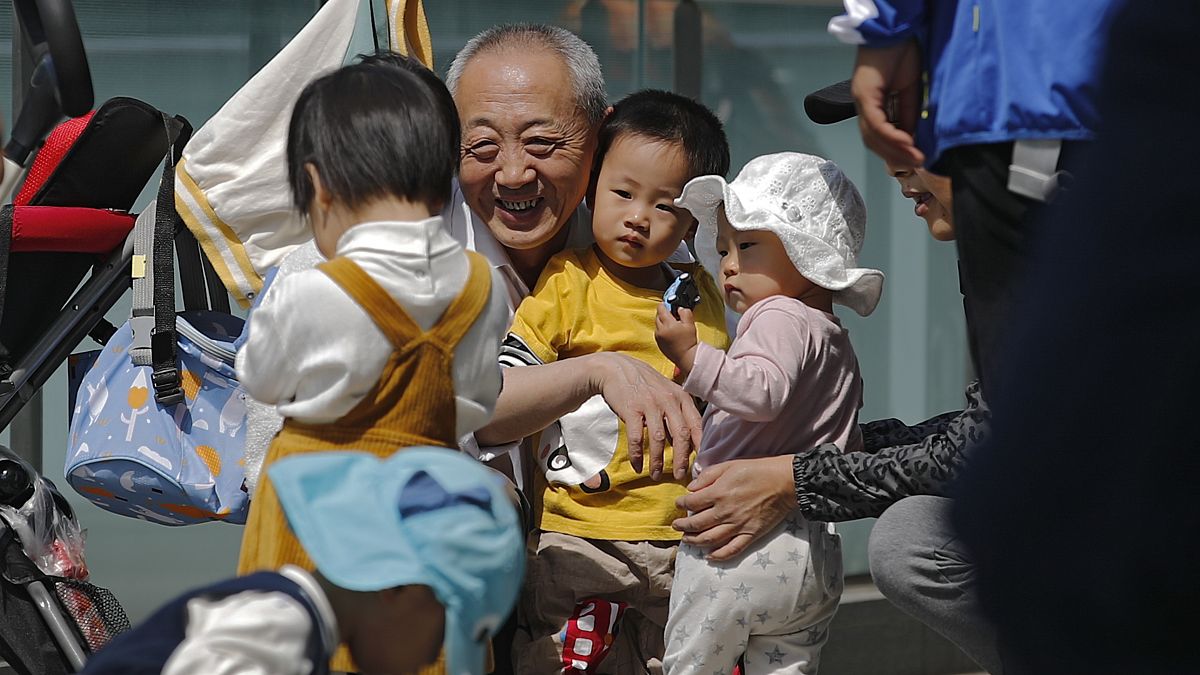Restrictions on the number of births were first introduced in 1980 but were eased in 2015 to allow couples to have two children.
China’s ruling Communist Party announced on Monday that all couples will now be allowed to have up to three children to slow the rapid ageing of the country's population.
Restrictions on the number of births were first introduced in 1980 but were eased in 2015 to allow couples to have two children.
This was in response to concerns over the falling number of working-age people compared to those over 65.
The ageing of the population is putting the economy under strain and threatens to disrupt the country's ambition to become a prosperous consumer society and global technology leader.
But couples say they are put off by the high costs of raising a child, disruption to their jobs and the need to look after elderly parents.
'Who will raise the baby?'
Comments on social media on Monday complained the change does nothing to help young parents with medical bills, low incomes and grueling work schedules known popularly as “996,” or 9 am to 9 pm, six days a week.
“Every stage of the problem hasn’t been solved,” said a post on the popular Sina Weibo blog service signed Tchaikovsky. "Who will raise the baby? Do you have time? I go out early and get back late. Kids don’t know what their parents look like."
Last year, people aged 15 to 59 made up 63.3 per cent of the population, down from 70.1 per cent a decade ago while those over 65 accounted for 13.5 per cent of the country's 1.4 billion inhabitants, up from 8.9 per cent.
The 12 million births reported last year were down nearly one-fifth from 2019. About 40 per cent were second children, down from 50 per cent in 2017, according to Ning Jizhe, a statistics official who announced the data on May 11.
Retirement age to go up
A ruling party meeting led by President Xi Jinping also agreed that it is "necessary to steadily implement the gradual postponement of the legal retirement age", the official Xinhua News Agency said.
It gave no details, but the government has been debating raising the official retirement ages of 60 for men, 55 for white-collar female workers and 50 for blue-collar female workers.
According to the World Bank, China's life expectancy at birth stood at 77 years in 2019.
The fertility rate, or the average number of births per mother, stood at 1.3 in 2020, well below the 2.1 that would maintain the size of the population.
China’s birth rate, paralleling trends in other Asian economies, was already falling before the one-child rule. The average number of children per Chinese mother tumbled from above six in the 1960s to below three by 1980, according to the World Bank.
Demographers say official birth limits concealed what would have been a further fall in the number of children per family without the restrictions.
The ruling party says it prevented as many as 400 million potential births, averting shortages of food and water. But demographers say if China followed trends in Thailand, parts of India and other countries, the number of additional babies might have been as low as a few million.
